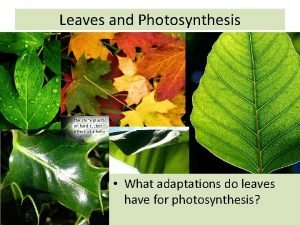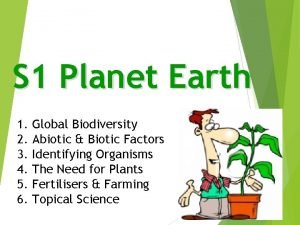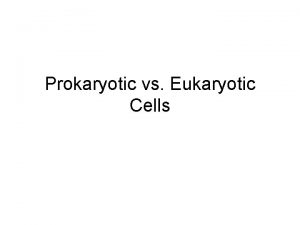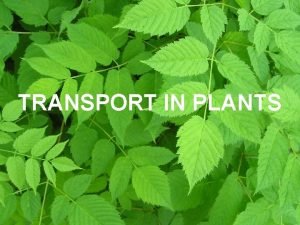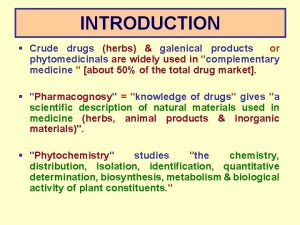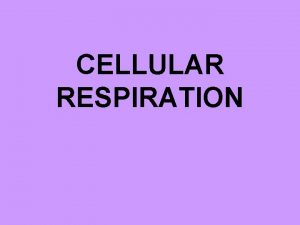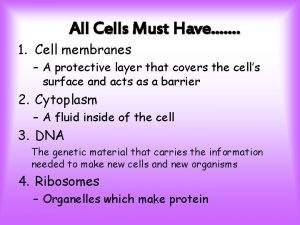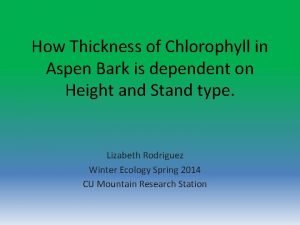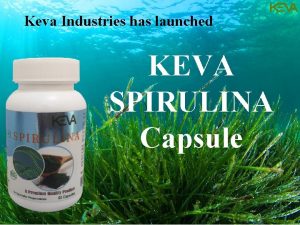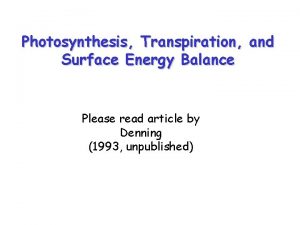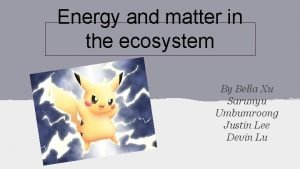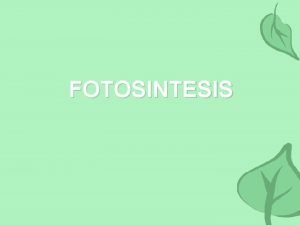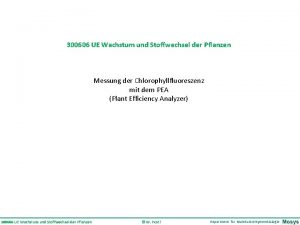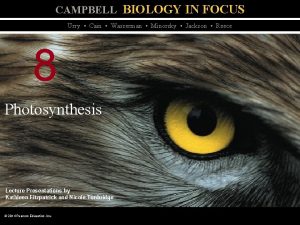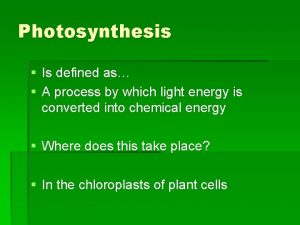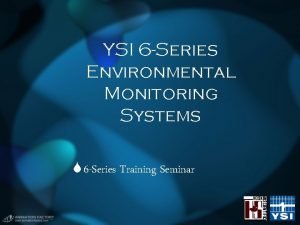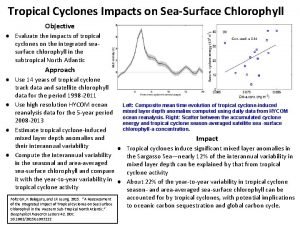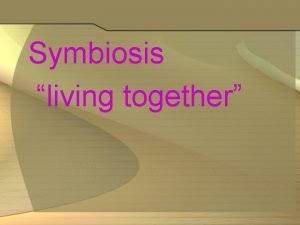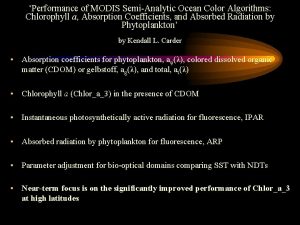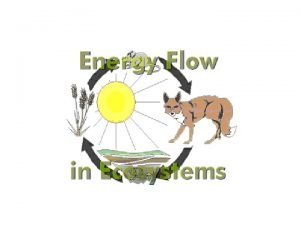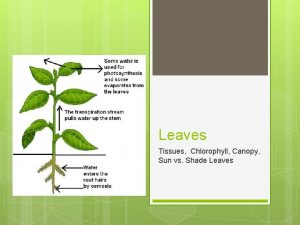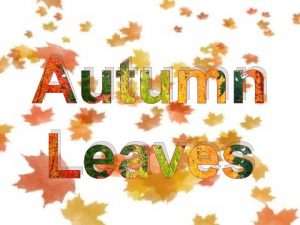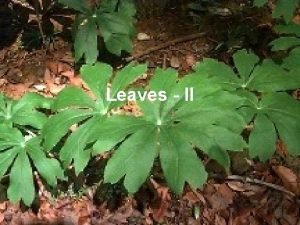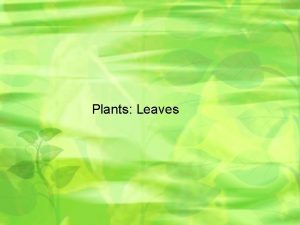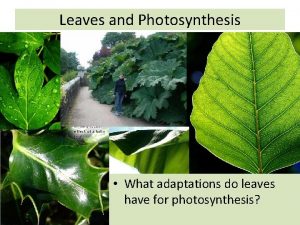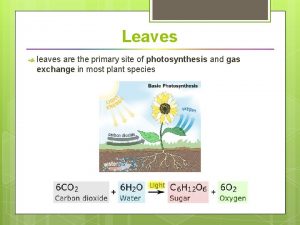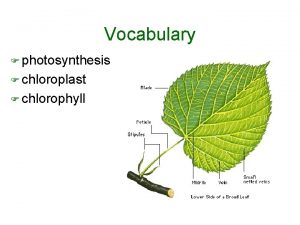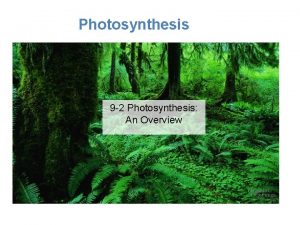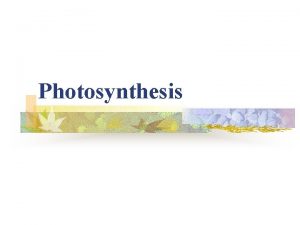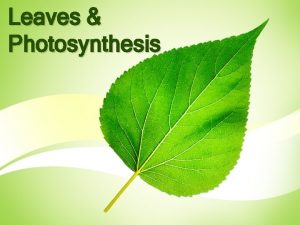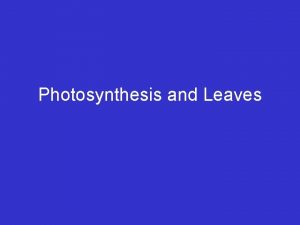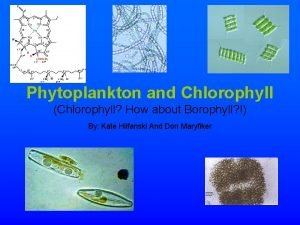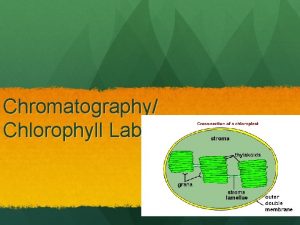Photosynthesis Chlorophyll The cells in leaves contain chlorophyll




































- Slides: 36


Photosynthesis

Chlorophyll • The cells in leaves contain chlorophyll • Traps energy from the sun to produce energyrich sugar molecules--carbohydrates 6 CO 2 + 6 H 2 O + solar energy = C 6 H 12 O 6 + 6 O 2

Energy & Nutrient Transfer

Producer • Organism that makes its own food • Also called autorophs

Consumer • Organism that get their energy by eating other organisms. • Also called heterotrophs


Decomposers • Organisms that feeds by breaking down organic matter from dead organisms • Examples: bacteria and fungi

Exception to the Rule • Deep-Ocean Ecosystems --Tube worms depend on bacteria that live inside them to survive. The bacteria uses energy from Hydrogen Sulfide to make their own food chemosynthesis

Chemosynthesis

Life Depends on the Sun • Organisms use energy to move, grow and reproduce

Grizzly Bears Omnivore—eats both meat & plants Can eat up to 1. 5% of their body weight in one day when eating salmon and 33% of body weight when eating fruits & vegetation. • How many pounds of salmon can a 200 lb grizzly bear eat in one day? 15% of 200 = 30 lbs • How many pounds of fruits and vegetation can the same bear eat in one day? 33% of 200 = 66 lbs

Cellular Respiration Breaking down of food to yield energy using the O 2 you breath in C 6 H 12 O 6 + 6 O 2 = 6 CO 2 + 6 H 20 + energy

Excess Energy • Stored as Fat or Sugar

Energy Transfer • Food Chains, Food Webs, Trophic Levels

Food Chain • Sequence in which energy is transferred from one organism to the next as each organism eats another organism

Food Web • Feeding Relationships that are possible in an ecosystem

Who Eats Who-Energy Transfer

Food Chain – Food Web

Trophic Level • Each step in the transfer of energy through a food chain or web in an ecosystem

Food Pyramid

Energy Loss Affects • 1. decrease amount of energy impacts each trophic level • 2. Loss limits the number of trophic levels; rarely have 4 or 5 levels since so much energy is needed to support

Trophic Cascade • Indirect interaction between predators and the resources consumed by the predator’s prey

Cycling of Materials • Materials in an ecosystem are constantly reused in an endless cycle

Nitrogen & Carbon Cycle



Nitrogen Cycle Movement of Nitrogen between atmosphere, bacteria and other organisms


Phosphorus Cycle Movement of phosphorus from the environment to organisms and back


Aquatic Ecosystem

How Ecosystems Change • Primary Succession occurs on a surface where no ecosystem existed before • Secondary Succession occurs where an ecosystem previously existed—pioneer species, climax community

Primary Succession

Ecological Succession

Old Field Succession
 What is photolysis in photosynthesis
What is photolysis in photosynthesis Name the raw materials needed for photosynthesis
Name the raw materials needed for photosynthesis Photosynthesis chlorophyll
Photosynthesis chlorophyll A single celled organism that lacks a nucleus
A single celled organism that lacks a nucleus Root pressure animation
Root pressure animation Enfleurage terpenes
Enfleurage terpenes All cells must contain
All cells must contain All cells must have
All cells must have Comparing plant and animal cells venn diagram
Comparing plant and animal cells venn diagram Prokaryotic cells vs. eukaryotic cells
Prokaryotic cells vs. eukaryotic cells Pseudostratified vs simple columnar
Pseudostratified vs simple columnar Gamete vs somatic cell
Gamete vs somatic cell Cells cells they're made of organelles meme
Cells cells they're made of organelles meme Prokaryotic cells vs eukaryotic cells venn diagram
Prokaryotic cells vs eukaryotic cells venn diagram Waters view
Waters view What cell type
What cell type Why dna is more stable than rna?
Why dna is more stable than rna? Cell organelle jeopardy
Cell organelle jeopardy Tubular lumen
Tubular lumen Prokaryotic cells vs eukaryotic cells
Prokaryotic cells vs eukaryotic cells Chlorocruorin
Chlorocruorin Masses of cells form and steal nutrients from healthy cells
Masses of cells form and steal nutrients from healthy cells Thyroid parafollicular cells
Thyroid parafollicular cells Chapter 8 cellular reproduction cells from cells
Chapter 8 cellular reproduction cells from cells Chlorophyll
Chlorophyll Aspen chlorophyll
Aspen chlorophyll Keva chlorophyll
Keva chlorophyll Structure of chlorophyll
Structure of chlorophyll Types of chlorophyll
Types of chlorophyll Chlorophyll biology definition
Chlorophyll biology definition Chlorophyll konjugierte doppelbindungen
Chlorophyll konjugierte doppelbindungen When a chlorophyll molecule absorbs light,
When a chlorophyll molecule absorbs light, Chlorophyll is
Chlorophyll is Ysi chlorophyll probe
Ysi chlorophyll probe Chlorophyll borophyll
Chlorophyll borophyll Living together video
Living together video Chlorophyll
Chlorophyll

